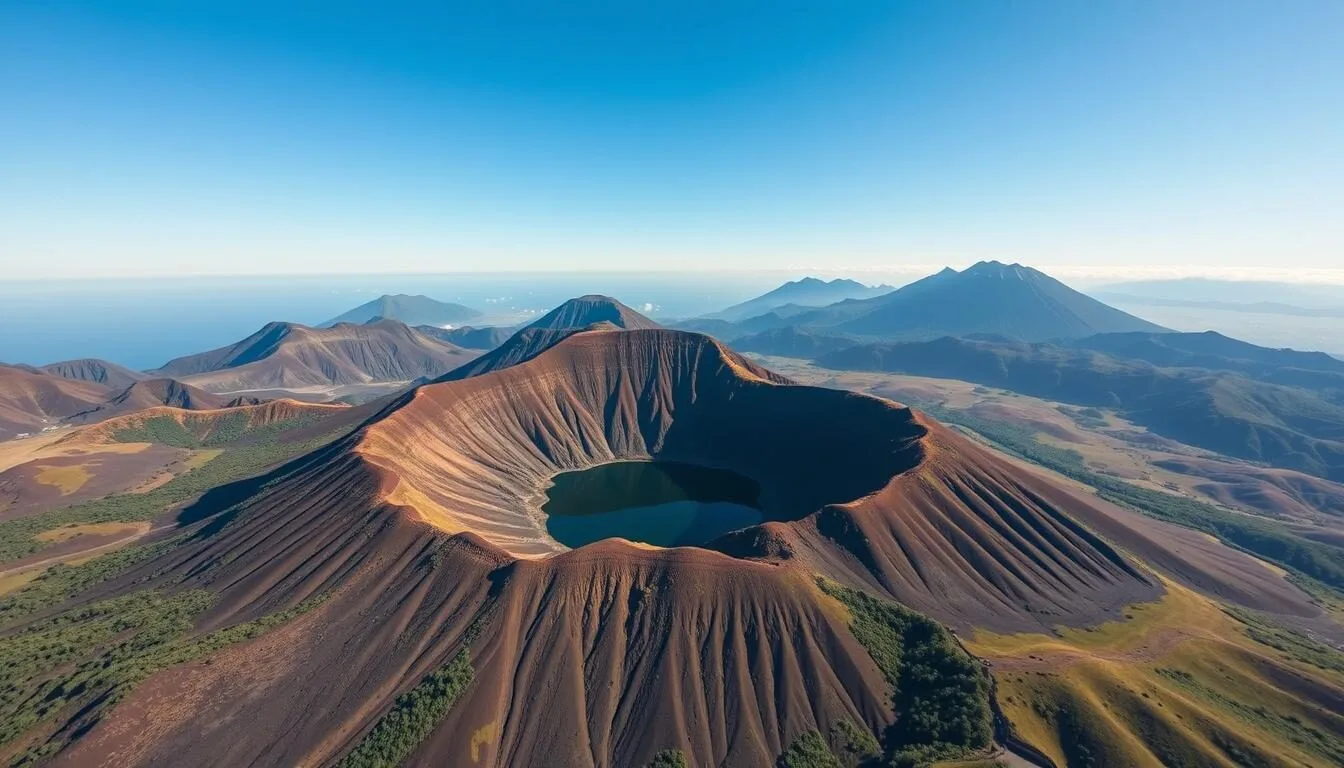Did you know Mount Rinjani’s crater lake, Segara Anak, is believed to hold mystical healing powers by locals? Standing tall at 3,726 m (12,224 ft), Indonesia’s second-highest volcano isn’t just a challenging trek—it’s a spiritual journey that combines breathtaking landscapes with cultural significance. The active volcano on Lombok Island offers adventurers a rare opportunity to witness a lake within a crater, hot springs with medicinal properties, and panoramic views that stretch all the way to Bali on clear days.
Getting There & Planning Your Journey
The journey to Mount Rinjani begins with reaching Lombok Island. You have several options to get there:
- By Air: Fly directly to Lombok International Airport (LOP) from Jakarta, Bali, or Singapore. From the airport, it’s approximately a 3-hour drive to Senaru or Sembalun, the main gateway villages to Mount Rinjani. Check flight options to find the best deals.
- By Sea: If you’re coming from Bali, fast boats operate daily from Padangbai, Serangan, or Amed to Bangsal Harbor in Lombok. The journey takes 1.5-2.5 hours depending on your departure point and sea conditions.
- From Lombok Airport: Arrange a private transfer to Senaru (north) or Sembalun (east), the two main starting points for Rinjani treks. The drive takes about 3 hours and costs around 500,000-700,000 IDR ($32-45 USD).
Ready to Start Your Rinjani Adventure?
Book your flights to Lombok and begin your journey to one of Indonesia’s most spectacular natural wonders.
Best Time to Visit & Weather Tips

Timing is crucial when planning your Mount Rinjani adventure. The mountain is officially closed during the rainy season due to dangerous conditions.
| Season | Months | Temperature | Conditions | Recommendation |
| Dry Season (Best) | April to November | 15-26°C (59-79°F) | Clear skies, minimal rain | Ideal for trekking |
| Early Dry Season | April to June | 17-25°C (63-77°F) | Less crowded, occasional rain | Great balance of good weather and fewer people |
| Peak Season | July to August | 15-24°C (59-75°F) | Very crowded, clearest views | Book well in advance |
| Late Dry Season | September to November | 16-26°C (61-79°F) | Moderate crowds, occasional rain | Good alternative to peak season |
| Rainy Season | December to March | 14-23°C (57-73°F) | Heavy rainfall, dangerous conditions | Mountain closed for trekking |
Pro Tip: The summit can be extremely cold before sunrise (as low as 5°C/41°F), so pack warm layers even during the dry season. Temperatures at the crater rim campsite typically drop to 10-12°C (50-54°F) at night.
Getting Around Locally
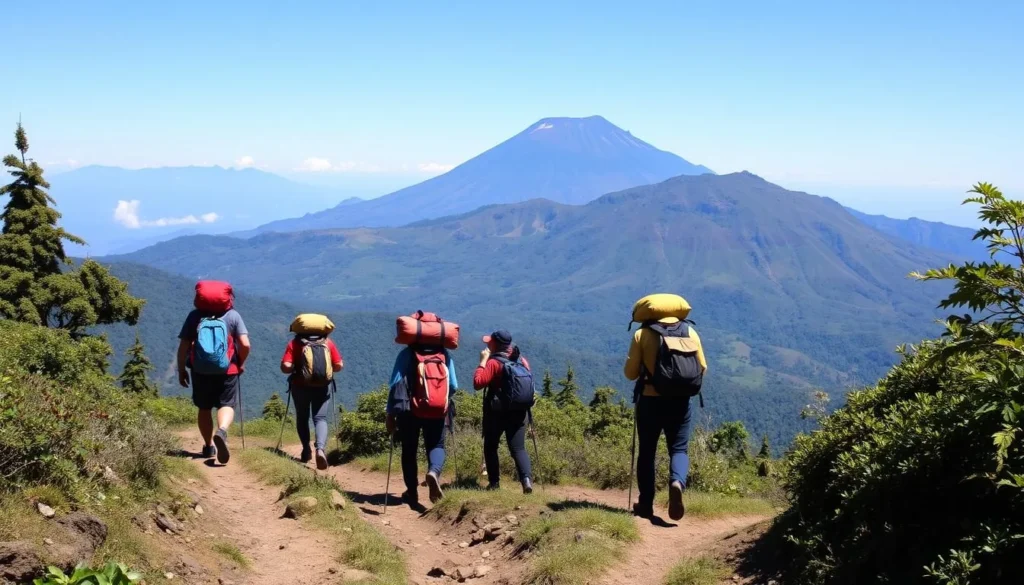
Once you arrive in Senaru or Sembalun, your options for getting around are somewhat limited but sufficient:
Local Transportation
- Ojek (Motorcycle Taxi): Available in villages for short distances, costing around 25,000-50,000 IDR ($1.60-3.20 USD) depending on distance.
- Private Car Hire: Available for day trips around Lombok, typically 500,000-800,000 IDR ($32-51 USD) per day.
- Trekking Guide Services: Most tour packages include transportation to and from the trailhead.
Renting Transportation
- Scooter/Motorbike: Rent for 70,000-100,000 IDR ($4.50-6.40 USD) per day in larger towns.
- Car Rental: Available from 350,000 IDR ($22 USD) per day, useful for exploring Lombok before or after your trek. Check rental car options for the best rates.
Note: For the actual Mount Rinjani trek, you’ll be traveling on foot. No vehicles can access the mountain trails, and the trek requires a licensed guide by park regulations.
Where to Stay
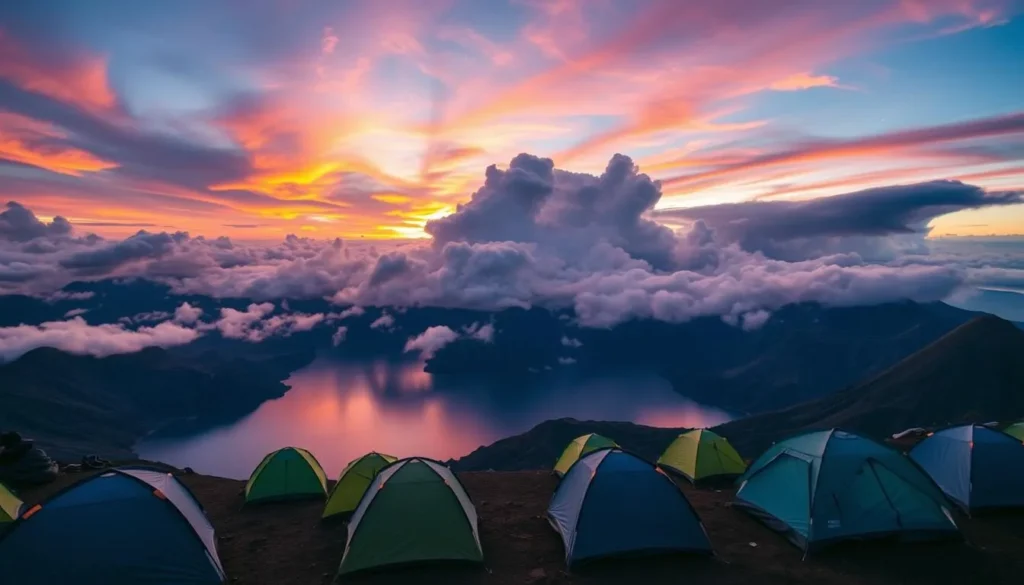
Accommodation options around Mount Rinjani range from basic homestays to comfortable resorts, with camping being the only option during multi-day treks:
Before/After Your Trek
- Homestays: Basic but comfortable rooms in Senaru or Sembalun from 150,000-300,000 IDR ($10-19 USD) per night.
- Guesthouses: Mid-range options with better amenities from 300,000-600,000 IDR ($19-38 USD).
- Resorts: Luxury options in Senggigi or Kuta Lombok from 1,000,000 IDR ($64 USD) and up.
During Your Trek
- Camping: Included in trekking packages, with tents set up at designated campsites.
- Crater Rim: Most popular camping spot with spectacular views.
- Lake Segara Anak: Camping by the lake allows access to hot springs.
- Summit Route: Camping at Pelawangan Sembalun for those attempting the summit.
Recommended Stays
- Rinjani Lodge: Beautiful views in Senaru with a pool.
- Villa Bambu Rinjani: Comfortable option often included with trekking packages.
- Pondok Senaru: Budget-friendly option with good reviews.
- Sembalun Highlands Resort: Great base for eastern route treks.
Find Your Perfect Stay Near Mount Rinjani
Book accommodations in Senaru or Sembalun for easy access to Mount Rinjani trailheads.
Dining & Local Cuisine
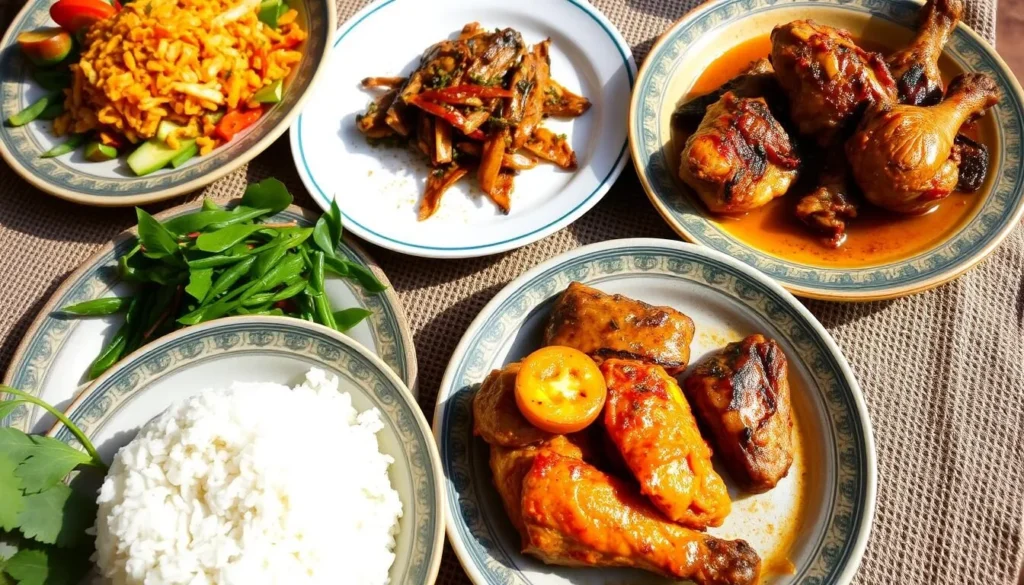
Lombok’s cuisine offers a delightful mix of flavors, often spicier than Balinese food. During your Mount Rinjani adventure, you’ll experience both local village dining and trekking meals:
Must-Try Local Dishes
- Ayam Taliwang: Lombok’s famous spicy grilled chicken, marinated in chili and spices.
- Plecing Kangkung: Water spinach salad with spicy tomato sambal, a local favorite.
- Beberuk Terong: Eggplant salad with a tangy, spicy dressing.
- Sate Pusut: Minced meat satay with coconut and spices.
- Ares: A traditional Sasak dish made from banana stem.
Dining During Your Trek
Trekking packages include all meals during your Mount Rinjani adventure. The food is surprisingly good considering it’s prepared at high altitude by porters carrying all ingredients:
Breakfast
- Pancakes with banana and honey
- Fried rice or noodles
- Eggs and toast
- Fresh fruit
- Coffee and tea
Lunch & Dinner
- Nasi goreng (fried rice)
- Mie goreng (fried noodles)
- Vegetable curry
- Grilled fish or chicken
- Fresh vegetables and fruit
Dietary Restrictions: Most trekking companies can accommodate vegetarian, vegan, and other dietary requirements with advance notice. Be sure to communicate your needs when booking your trek.
Attractions, Sightseeing & Activities
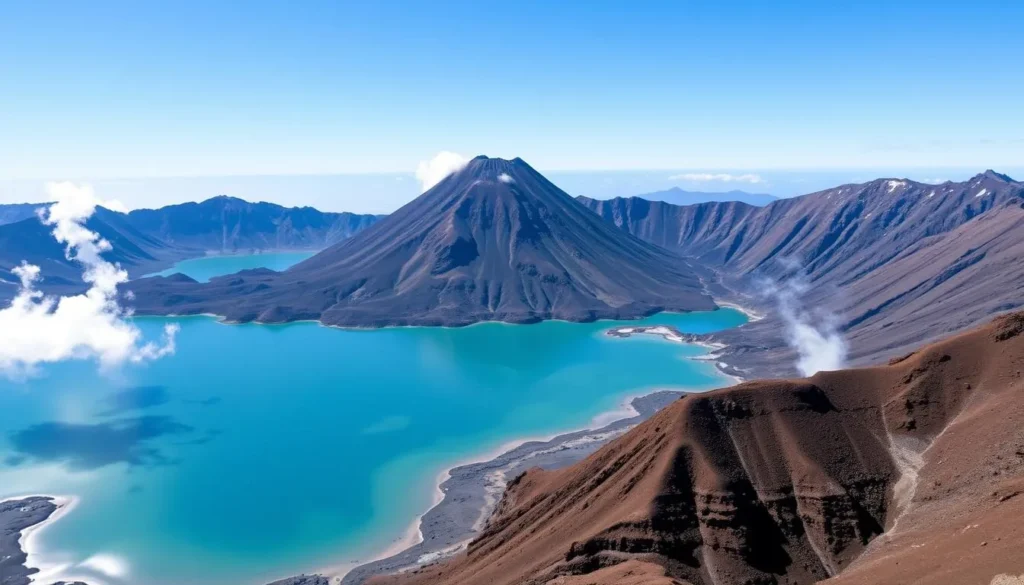
Mount Rinjani offers a wealth of natural attractions and activities that make the challenging trek worthwhile:
Main Attractions
- Summit (3,726 m): The ultimate achievement offering panoramic views of Lombok, Bali, and surrounding islands.
- Segara Anak Lake: The stunning turquoise crater lake spanning approximately 6 km².
- Mount Barujari: The active volcanic cone rising from within Segara Anak Lake.
- Hot Springs: Natural hot springs near the lake with healing mineral properties.
- Crater Rim: Spectacular viewpoint overlooking both the lake and the ocean.
Popular Trekking Routes
| Route | Duration | Starting Point | Difficulty | Highlights |
| Summit via Sembalun | 3 days, 2 nights | Sembalun Village | Difficult | Summit, crater rim, lake views |
| Crater Rim via Senaru | 2 days, 1 night | Senaru Village | Moderate | Jungle trek, crater rim views |
| Lake Circuit | 3 days, 2 nights | Senaru Village | Moderate-Difficult | Lake, hot springs, jungle |
| Complete Circuit | 4 days, 3 nights | Sembalun or Senaru | Difficult | Summit, lake, hot springs, both villages |
| Second Summit (Sangkareang) | 2 days, 1 night | Senaru Village | Moderate-Difficult | Alternative summit (3,126 m), less crowded |
Book Your Mount Rinjani Trek
Join a guided trek with experienced local guides who will ensure your safety and enhance your experience.
Cultural Spots & Festivals
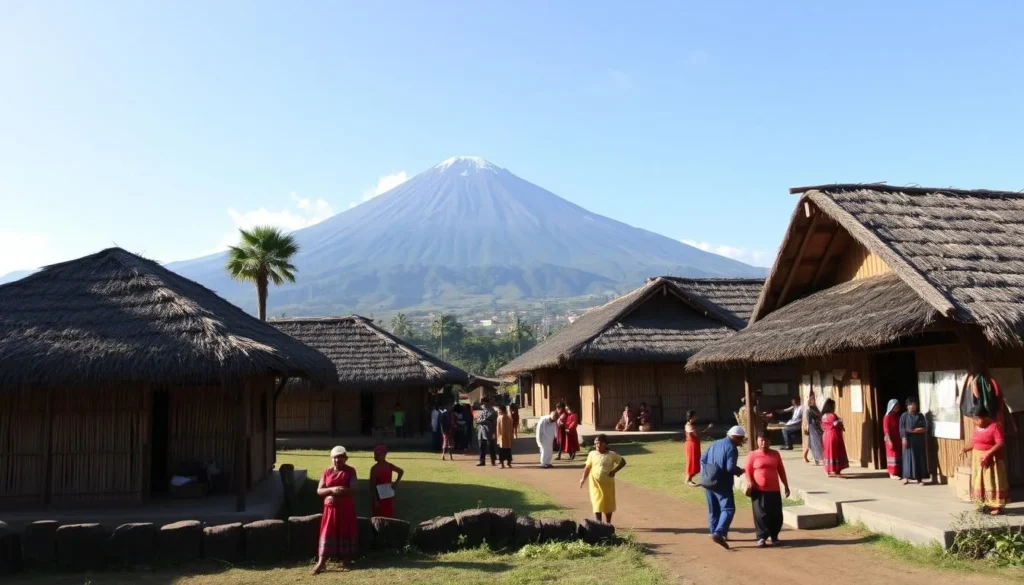
Mount Rinjani isn’t just a natural wonder—it’s deeply woven into the cultural fabric of Lombok:
Cultural Significance
For the Sasak people (Lombok’s indigenous inhabitants) and Balinese Hindus, Mount Rinjani is considered sacred. The crater lake, Segara Anak, is believed to be a dwelling place of gods and possesses healing powers. Many pilgrims trek to the lake to collect water or perform ceremonies.
Cultural Sites Near Rinjani
- Traditional Sasak Villages: Visit authentic villages like Senaru Traditional Village to see traditional architecture and daily life.
- Lingsar Temple: A unique temple that represents harmony between Hindu and Islamic beliefs.
- Bayan Old Mosque: One of the oldest mosques in Lombok, featuring traditional architecture.
- Tiu Kelep and Sendang Gile Waterfalls: Sacred waterfalls near Senaru with cultural significance.
Festivals and Ceremonies
- Bau Nyale Festival: Celebrated in February/March, this festival involves collecting sea worms that appear annually, believed to be the reincarnation of Princess Mandalika.
- Perang Topat: A unique ritual at Lingsar Temple where participants engage in a friendly “war” using rice cakes.
- Rinjani Festival: An annual event celebrating the mountain’s cultural and natural heritage with various activities.
Respectful Visiting: When visiting cultural sites or witnessing ceremonies, dress modestly (covering shoulders and knees), ask permission before taking photos, and follow local customs and guidance.
Sports, Nature & Outdoor Experiences
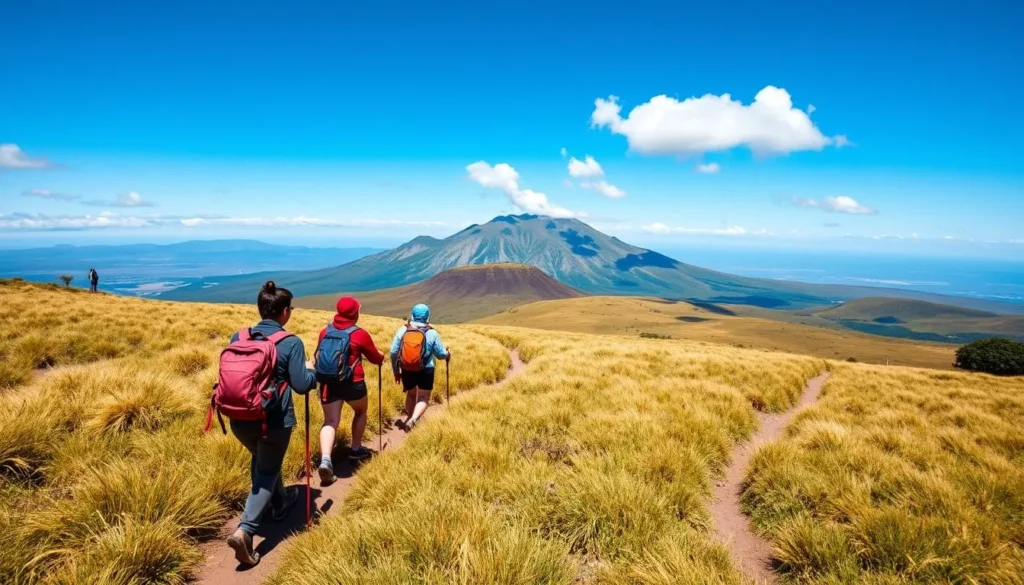
Beyond the main trekking routes, Mount Rinjani and its surroundings offer numerous outdoor activities for nature enthusiasts:
On the Mountain
- Photography: Capture stunning landscapes, sunrise/sunset, and the unique crater lake.
- Birdwatching: Spot endemic species like the Rinjani scops owl and Lombok honeyeater.
- Camping: Experience nights under the stars at designated campsites.
- Swimming: Take a dip in the crater lake (though it’s quite cold).
- Hot Springs: Relax in natural hot springs near the lake to soothe tired muscles.
Around Rinjani
- Waterfall Trekking: Visit Tiu Kelep and Sendang Gile waterfalls near Senaru.
- Mountain Biking: Explore trails around the foothills of Rinjani.
- Jungle Trekking: Discover the rich biodiversity of Rinjani National Park.
- Beach Activities: Visit nearby beaches for swimming, snorkeling, or surfing.
- Gili Islands: Take a day trip to the nearby Gili Islands for snorkeling and relaxation.
Wildlife Encounters
Mount Rinjani National Park is home to diverse wildlife, including:
- Long-tailed macaques
- Rusa deer
- Palm civets
- Over 40 bird species
- Various reptiles and amphibians
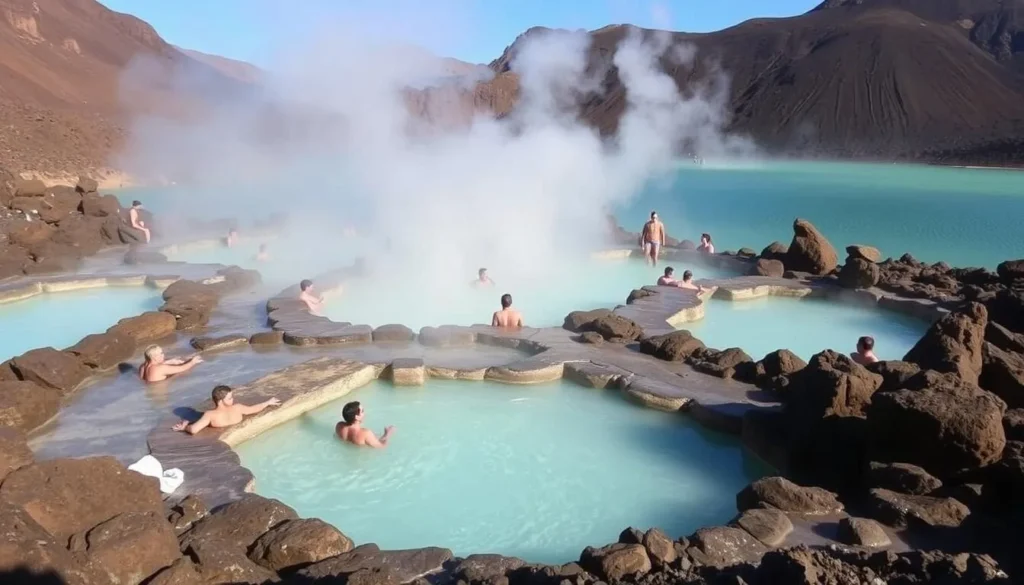
Responsible Tourism: Stay on designated trails, pack out all trash, avoid disturbing wildlife, and follow Leave No Trace principles to help preserve this magnificent ecosystem for future generations.
Safety, Etiquette & Local Customs
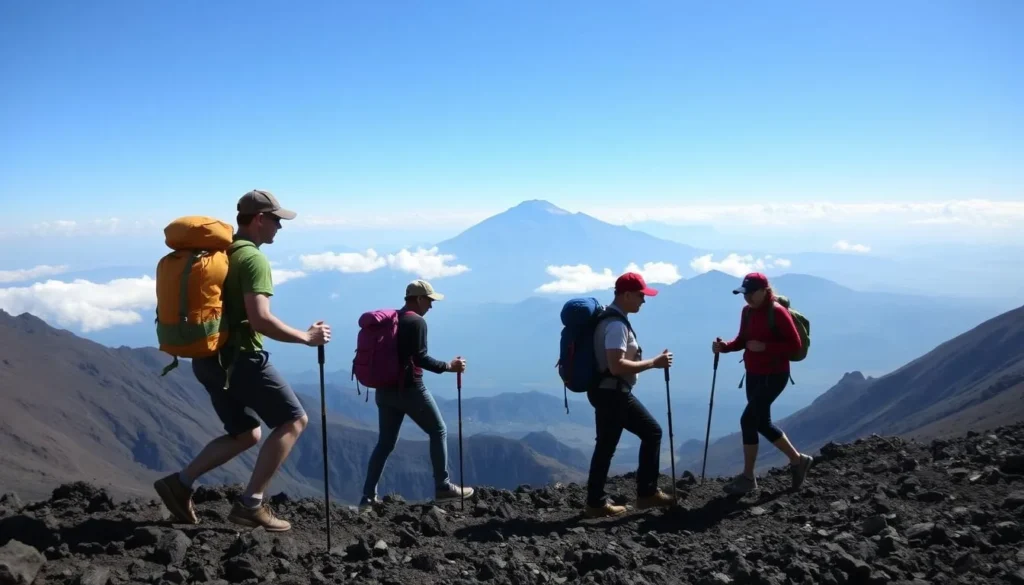
Ensuring a safe and respectful experience on Mount Rinjani requires preparation and cultural awareness:
Safety Considerations
- Guide Requirement: It’s mandatory to hire a licensed guide for all Rinjani treks.
- Physical Fitness: The trek is strenuous—prepare with cardio and strength training before your trip.
- Altitude Sickness: Be aware of symptoms (headache, nausea, dizziness) and descend if they become severe.
- Weather Awareness: Conditions can change rapidly; be prepared for sun, rain, and cold temperatures.
- Volcanic Activity: Check for alerts before your trek, as the volcano is active.
Cultural Etiquette
- Respect Sacred Sites: The crater lake is considered sacred; avoid inappropriate behavior.
- Modest Dress: When visiting villages, cover shoulders and knees.
- Porter Treatment: Treat porters with respect and consider fair tipping (50,000-100,000 IDR per day).
- Photography: Ask permission before photographing locals, especially during ceremonies.
- Remove Shoes: When entering homes or religious buildings.
Do’s
- Hire a licensed guide and reputable trekking company
- Register at the national park office
- Carry sufficient water and snacks
- Pack out all trash (including toilet paper)
- Respect wildlife and stay on designated trails
Don’ts
- Trek alone or without proper permits
- Attempt the trek during rainy season
- Underestimate the difficulty of the climb
- Litter or damage the environment
- Disrespect local customs or sacred sites
Practical Travel Tips

Essential Packing List
Clothing
- Moisture-wicking t-shirts and pants
- Warm jacket and thermal layers for summit
- Waterproof/windproof jacket
- Hat and gloves
- Sturdy hiking boots (broken in)
- Extra socks
Equipment
- Headlamp with extra batteries
- Trekking poles (optional but helpful)
- Sleeping bag liner (tour provides sleeping bags)
- Water bottles (2-3 liters capacity)
- Small daypack for summit attempt
- Camera with extra batteries
Permits and Costs
All trekkers must obtain permits through their trekking company or guide:
- National Park Entry Fee: 150,000 IDR ($10 USD) on weekdays, 250,000 IDR ($16 USD) on weekends/holidays for foreigners
- Trekking Package Costs: $250-450 USD for 2-4 day treks, including guide, porter, food, camping equipment, and transportation
- Additional Costs: Tips for guides and porters (recommended), extra snacks, gear rental if needed
Communication & Connectivity
- Mobile Coverage: Limited on the mountain; strongest at the crater rim in some spots
- Local SIM Card: Purchase in Mataram or major towns before your trek
- Emergency Contact: Share your trekking company details with family/friends
“The journey to Mount Rinjani’s summit is challenging, but the reward of standing above the clouds, gazing at the crater lake below as the sun rises, creates memories that last a lifetime.”
Ready for Your Mount Rinjani Adventure?
Book your complete Lombok experience with flights, accommodations, and guided treks to make the most of your journey.
Conclusion
Mount Rinjani offers an adventure that combines physical challenge with natural beauty and cultural significance. From the moment you begin your ascent through lush forests to the breathtaking views from the crater rim and summit, this journey delivers unforgettable experiences at every step. Whether you’re soaking in hot springs beside the mystical crater lake or watching the sunrise paint the sky from Indonesia’s second-highest peak, Rinjani rewards those willing to make the climb. With proper preparation, respect for local customs, and an adventurous spirit, your Mount Rinjani trek will likely become one of your most treasured travel memories. The mountain is calling—are you ready to answer?
The above is subject to change.
Check back often to TRAVEL.COM for the latest travel tips and deals.
